Introduction
India, a country known for its diverse geography and rich cultural heritage, consists of 28 states and 8 Union Territories. Among these, Goa holds the title of the smallest state in terms of land area. Despite its small size, Goa is one of the most significant states in India due to its thriving tourism industry, economic contributions, and historical importance.
Geographical Overview of Goa
Goa, situated on the western coast of India, is spread across just 3,702 square kilometers. It is bordered by Maharashtra to the north, Karnataka to the east and south, and the Arabian Sea to the west. The state is known for its picturesque beaches, scenic landscapes, and rich biodiversity.
Economic Importance of Goa
Despite its small geographical footprint, Goa contributes significantly to India’s economy. The primary sectors driving Goa’s economy include:
- Tourism: The backbone of Goa’s economy, attracting millions of domestic and international tourists annually.
- Mining Industry: Although impacted by regulatory concerns, Goa’s mining industry is historically known for its iron ore exports.
- Fisheries and Agriculture: These sectors play a crucial role in the local economy, supporting thousands of livelihoods.
- Industrial Growth: The state has witnessed steady industrial development, with pharmaceuticals, shipbuilding, and IT emerging as key contributors.
Cultural and Historical Significance
Goa has a unique blend of Indian and Portuguese cultures due to over 450 years of Portuguese rule, which ended in 1961 when it was liberated and integrated into India. This cultural fusion is evident in its architecture, cuisine, and local traditions.
Goa’s Administrative Setup
Goa has only two districts: North Goa and South Goa. The state capital is Panaji, while Vasco da Gama is the largest city. Goa’s legislative assembly consists of 40 seats, and it sends two members to the Lok Sabha and one to the Rajya Sabha.

Why This News Is Important?
Relevance for Competitive Exams
Aspirants preparing for government exams such as UPSC, SSC, Banking, Railways, and State PCS must be aware of geographical and administrative facts about Indian states. Questions related to the smallest and largest states, their capitals, and economic significance are frequently asked in exams.
Economic and Strategic Importance
Despite being the smallest state, Goa plays a vital role in India’s economic framework. Understanding its contributions in tourism, mining, and fisheries can be helpful for banking and economy-related exams.
Cultural and Historical Perspective
Exams often include questions on India’s historical events and foreign rule. Goa’s Portuguese influence and its liberation in 1961 make it an essential topic under modern Indian history.
Tourism and Environmental Concerns
The sustainability of Goa’s tourism and environmental conservation efforts are critical for students appearing in exams related to environment and geography.
Historical Context
Portuguese Colonization and Liberation
Goa was a Portuguese colony from 1510 to 1961. It was one of the last European colonies in India. The movement for Goa’s liberation gained momentum in the early 20th century, culminating in Operation Vijay, launched by the Indian Armed Forces in December 1961. Following the operation, Goa was annexed to India and later attained statehood on 30th May 1987.
Economic Evolution Over the Years
From a trade-centric economy under Portuguese rule, Goa has transformed into a tourism hub and a key player in the hospitality and industrial sectors. The decline of the mining industry due to environmental concerns has led to a greater focus on sustainable tourism and alternative industries.
Key Takeaways from Goa – India’s Smallest State
| S. No | Key Takeaway |
|---|---|
| 1 | Goa is the smallest state in India by area, covering 3,702 square kilometers. |
| 2 | It was a Portuguese colony for over 450 years before being liberated in 1961. |
| 3 | Goa’s economy is driven by tourism, mining, fisheries, and industrial sectors. |
| 4 | The state has two districts: North Goa and South Goa, with Panaji as its capital. |
| 5 | Goa attained statehood on 30th May 1987, making it the 25th state of India. |
FAQs: Frequently Asked Questions
1. What is the total area of Goa?
Goa covers a total area of 3,702 square kilometers, making it the smallest state in India.
2. When did Goa attain statehood?
Goa became a state on 30th May 1987, prior to which it was a Union Territory.
3. Which districts are present in Goa?
Goa consists of two districts: North Goa and South Goa.
4. What was the name of the military operation that led to Goa’s liberation?
The military operation that led to Goa’s liberation was Operation Vijay, conducted by the Indian Armed Forces in 1961.
5. What are the main industries in Goa?
Goa’s economy is primarily driven by tourism, mining, fisheries, agriculture, and industrial sectors.
Some Important Current Affairs Links









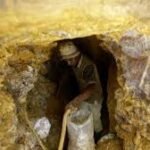


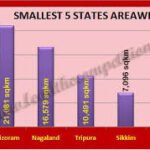
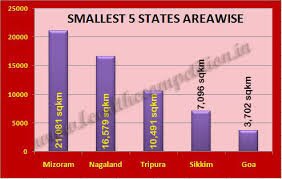

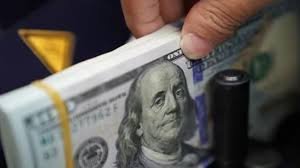
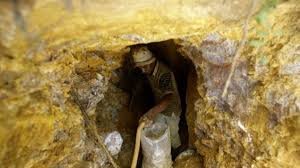

 Exciting News!
Exciting News!  Join Our Telegram Channel Now!
Join Our Telegram Channel Now!
 Join our Telegram channel for a thrilling adventure into the world of daily current affairs.
Join our Telegram channel for a thrilling adventure into the world of daily current affairs. 
 Don’t miss out on the latest updates and insights! Click to join now and be part of the knowledge revolution!
Don’t miss out on the latest updates and insights! Click to join now and be part of the knowledge revolution! 
